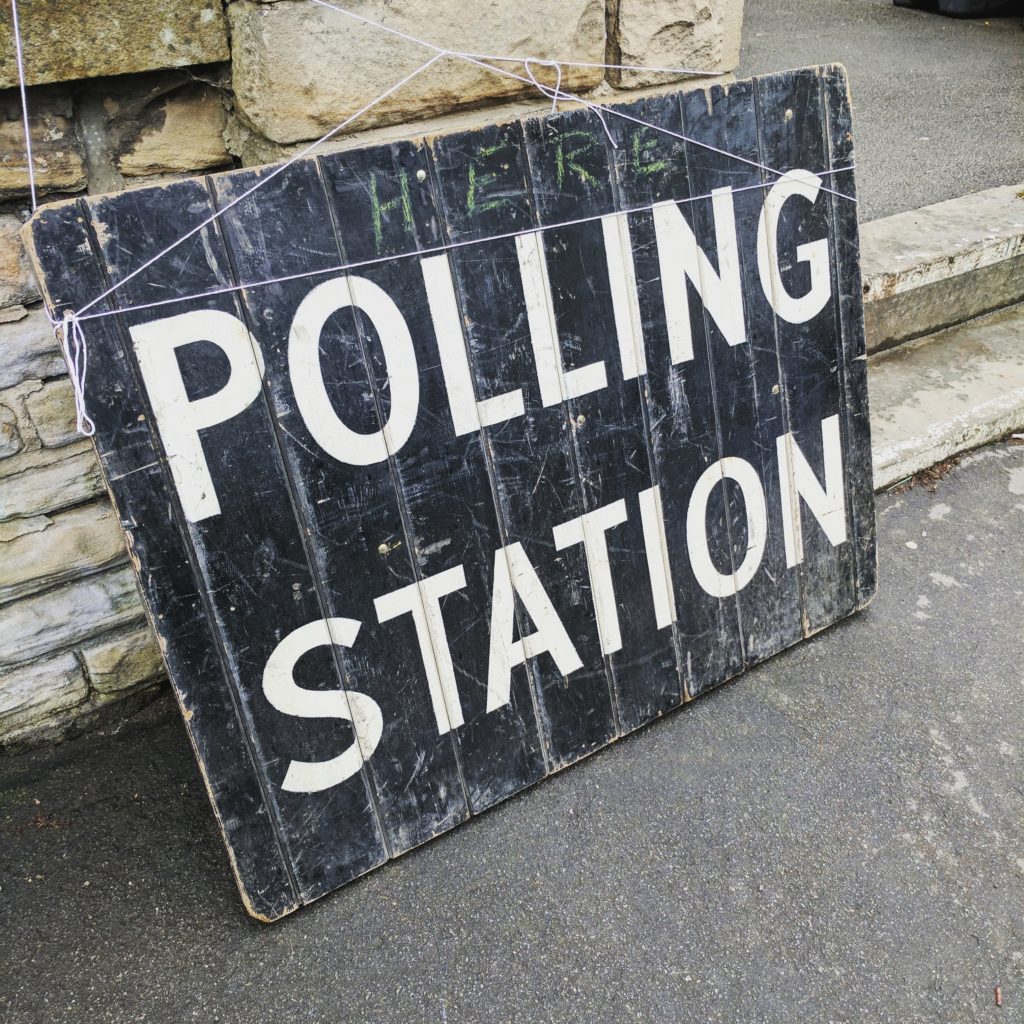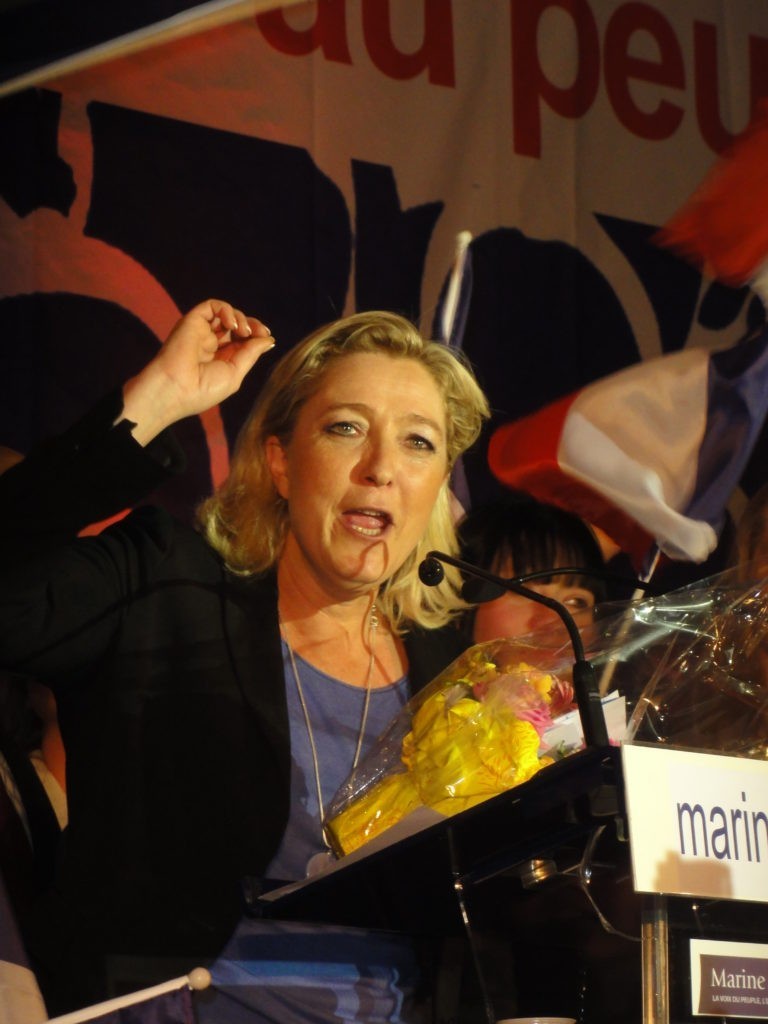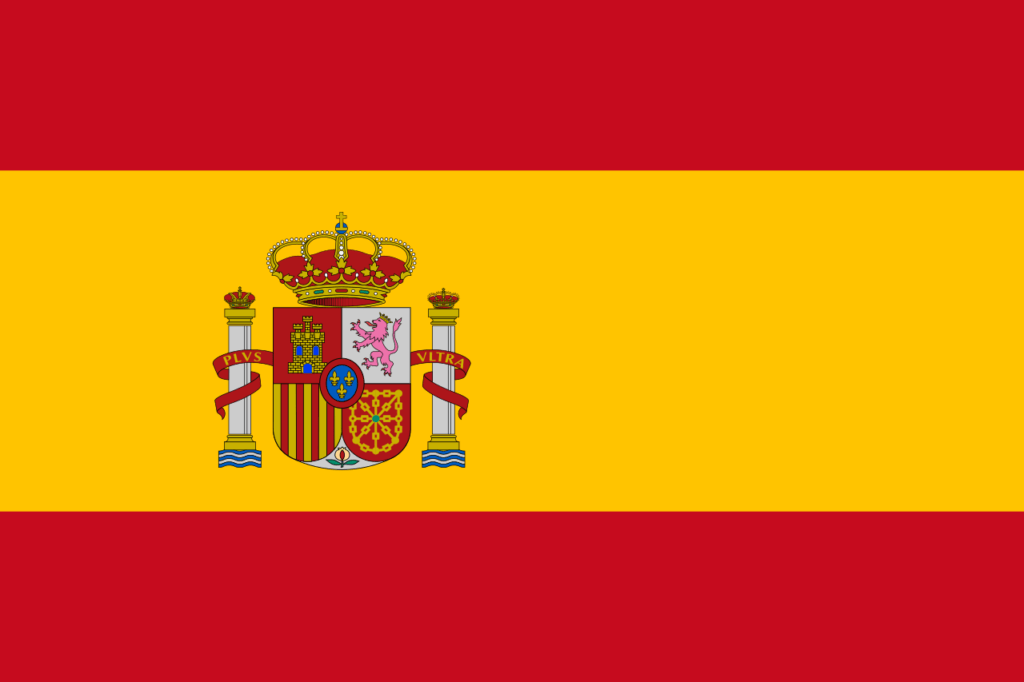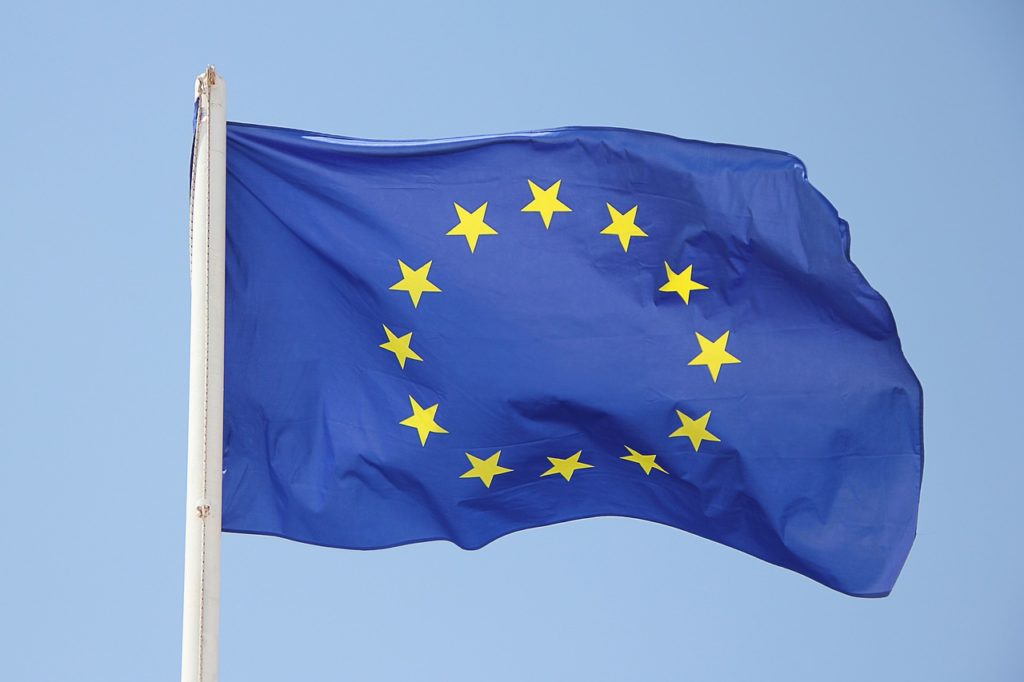HOPE not hate uses cookies to collect information and give you a more personalised experience on our site. You can find more information in our privacy policy. To agree to this, please click accept.
When the Black Death rolled over the continent in the 14th century, it eradicated 30 to 50 per cent of Europe’s population. The social consequence…
When the Black Death rolled over the continent in the 14th century, it eradicated 30 to 50 per cent of Europe’s population. The social consequence of that plague was blaming certain ethnic groups for creating, spreading or surviving the disease. Since Jews appeared to be dying in fewer numbers, it resulted in them being tortured and killed across Europe for “spreading the disease”. The COVID-19 pandemic has dominated the news since the start of 2020, exposing cracks in government policies, causing divisions between politicians and re- establishing national borders within Europe. There have been over a 1.5 million covid-related deaths worldwide in 2020, and more than 70 million cases. Europe alone accounts for around 400,000 deaths since the first one was recorded in France on 15 February 2020, with the United Kingdom accounting for one of the highest number of deaths in Europe.
Citizens across the world have grown increasingly worried about the consequences of the coronavirus. The impact of the on-going pandemic is only beginning to show itself, with the full economic devastation predicted ensuring fertile grounds for the far right. Researchers have pointed to a host of catalysts at individual and societal level that contribute to radicalisation. Factors such as personal loss, the psychological burden and
the economic instability created by the pandemic provide ideal grounds for far right recruitment. In a similar but much more widespread fashion than the 14th century plague, different minorities are being blamed and conspiracy theories about the pandemic abound across both the online and offline world.
The first wave of coronavirus proved deadly, catching European leaders unaware after the majority had ignored expert advice that drastic measures had to be taken. In fact, after the WHO declared a public health emergency, only four countries reported they might lack the protective equipment needed. European nations failed to act in a coordinated manner, hoarding essential equipment, chaotically closing borders leaving stranded citizens abroad and failing to expand their medical capacities in the initial weeks and months after the virus emerged in China. The urgency only appeared in most European countries in March, and by that time several European Health ministers had already resigned or been replaced, adding to the confusion. Croatian health minister Kujundžić was sacked by the end of January, France’s Buzyn quit at the start of 6, Dutch Medical Care Minister Bruins resigned in March7 while Romanian Costache resigned at the end of March.

The declining international collaboration, the challenge countries faced in providing services, perceived differences in the quality of the government response as well as the deepening inequalities made evident, all added to the tension caused by the pandemic and impacted the receptiveness of individuals to radical ideology.
There has also been a sharp increase in anti-Asian, anti-Muslim and anti-Semitic hate crimes across the world, emboldened by mainstream and far right rhetoric over the last few months. Online, this has been evident through misinformation campaigns, stigmatising memes and conspiracy theories around COVID-19 and minority groups. The far right have successfully repackaged hateful ideas within new COVID-19 conspiracy theories such as Jews being responsible for creating the pandemic or Muslims spreading the virus intentionally. They have also attempted to insert themselves within growing movements such as the anti-mask and anti- lockdown protests. The last few months has also seen rhetoric against open European borders, the global elite and the danger of immigrants surge in the context of COVID-19.
The global pandemic has had a seismic effect across the continent. It is of course too soon to definitively say what the effect on the far right will be as things are still in flux. There are also large differences across the continent and the far right has been impacted differently across Europe, depending on the politics of the country, the government’s reaction to the pandemic and the power the far right group had established before COVID-19. In the short term there have been both positives and negatives but the far right generally failed to capitalise on the pandemic. Most European governments enjoyed a surge in popularity as the public initially rallied in solidarity and unity in the face of the virus. However, this faded in several countries as a second lockdown was instated. The long-term effects of the pandemic have also made some communities more susceptible to the far right.
Unlike previous European flash points such as the refugee crisis of 2015/2016 or the financial crisis of 2008, the far right did not enjoy an immediate rise in popularity over the course of the year 2020 and across the continent. Despite the political squabbling over masks and the every-country-for- itself approach to COVID-19 in the first months, the populist and Eurosceptic elements of the far right were often unsuccessful in dominating the narrative. Many of the far right parties failed to respond coherently, or with internal unity and took time to develop a new message. Attempts at rallying support against immigration for example, did not succeed in capturing the public mood.
The pandemic has shifted migration rhetoric to include the risk to individual health, but the virus has not spread across Europe through the typical refugee and migratory routes. Instead, while far right politicians were calling for closing ports in Italy, COVID-19 had already created clusters throughout the country. This has weakened the far right’s message associating safety with refusing immigrants. The fact that European countries did exactly what the far right has been calling for and shut down borders in March 2020 also removed an important rallying point for far right politicians. Their flailing strategies became more focused as the months went by however, and researchers have seen a dangerous merging of far right activity with more mainstream protests against lockdowns, masks and safety measures. The growing discontent as many governments decided on a second lockdown before Christmas also gave greater ammunition to far right groups, who positioned themselves with discontented citizens.

The following case studies examine the various similarities and differences in how different far right groups were impacted by the pandemic over the last year. The cases of Germany, Italy, France and Spain are used to illustrate the impact of COVID-19 on far right parties that were not in power when the pandemic began. The far right parties all had slightly different ways of tackling the coronavirus based on regional and political differences, as well as how each government addressed and managed the crisis. This led to non-ruling far right groups standing up for unusual political positions because their nature meant they had to remain anti-ruling-elite and in opposition to the governing party. The far right in Sweden for example, had a government that opted to keep schools and restaurants open. The Sweden democrats therefore could target the high mortality rate that resulted but also urged the government to follow international guidelines instead of trusting the advice of Swedish experts – an about-turn from the usual rhetoric around Swedish exceptionalism. Another outlier was the radical right-wing Swiss People’s Party (SVP) in Switzerland, where from the start the SVP acknowledged the threat of COVID-19. In fact, SVP politician Magdalena Martullo-Blocher was the first and only MP to wear a face mask at the start of March and was asked to leave by the president of the national assembly so as to “not disturb” the debates.

When 9 people were shot and killed in shisha lounges in Hanau by an alleged far right attacker, it was only another act of violence in a long list of far right plots recently carried out in Germany. The early 2020 German political scene was dominated by the role of the AfD – the Alternative for Germany– and its influence within the country. Their success in the polls worried the political establishment and the young party – it was launched in 2013 – enjoyed rising popularity using an anti-immigrant, anti-Islam and Eurosceptic platform. A regional election in October 2019 showed they were the second most popular party in Thuringia, beating Merkel’s party and receiving more than double the share of votes than what it received five years ago.
While the German government began to mobilise seriously against the pandemic in March, the German far right party downplayed warnings. Following the lead of America’s President, Donald Trump, the AfD politicians spoke of the COVID-19 being mild, that it was Chinese hoax and that the government was needlessly agitating the public for its own ends. AfD politician Axel Gehrke, who was the party’s spokesperson for health policy until he left the position in October, wrote in late March that the coronavirus was “demonstrably milder than influenza viruses,” and spoke of the “gigantic FAKE of the year.”15 However, this strategy failed to resonate as the crisis exponentially worsened and the German public took the government’s guidelines seriously. While AfD politicians were tweeting anti-refugee rhetoric, the public seemed to have already switched gears, with COVID-19 being the ultimate focus. Speeches about the outside invader refugee were no longer on the political agenda when the virus was within Germany already.
The AfD did a U-turn in April and published a policy paper, switching to criticising the government for reacting too slowly to the pandemic. They claimed a shutdown could have been avoided with earlier reactions from the authorities and that the measures taken breached human rights. However, Angela Merkel’s scientific, evidence-based and no-nonsense approach proved popular with the German people while the AfD’s lack of coherent messaging began losing them points in the polls. The Afd’s messaging around the elite not serving the voters did not ring true as the German government was lauded for its strong decisive actions against the virus, both nationally and internationally. From op-eds, social media posts and TV pundits, Merkel’s approach to the crisis was seen to be that of a great leader. A Spanish commentator even went so far
as coin a word “Merkelina”, to define a leadership that solves problems without attempting to derive political gain from it. German voters also appeared to prefer expert sources for guidance during the crisis. A survey in April showed 80 per cent of the German public approved of the government’s actions and Merkel gained significant support in national polls. Even internationally, confidence in the German chancellor was higher than in any other leader, according to a Pew Research Center survey of 14 countries.
The AfD was also experiencing a bitter intra-party fight between moderate and more far right wing elements of it, contributing to the confusion in messaging. The anti-vaccination groups, conspiracy theorists and neo-fascist elements exposed a cleavage within the AfD during the pandemic, and AfD leaders were conscious these elements could alienate more moderate members.
The AfD then decided to focus on positioning themselves, with greater success, as the voice of the people in a time of great economic uncertainty. The International Monetary Fund predicted a global contraction on par with the Great Depression and since May, the AfD have called for the opening of shops and public places. This has since gained significant traction with the general public and evidence of its success was seen internationally on 29 August when far right protesters participated in the storming of the parliament building in Berlin. Hundreds of protesters, some waving the flag of the Third Reich breached security barriers. This was part of a larger protest of 38,000 people demonstrating against the COVID-19 safety policies. Michael Ballweg, the organiser of the protest distanced himself from the storming of the Reichstag. However, the Identitarian movement and two neo-Nazi groups, the National Democratic Party and The Third Way had called for their members to attend the protest.
The popularity of the protests and the joining of the far right within indicates waning government support as Covid-restriction fatigue settles in. As polls began to show a waning of public approval for the government’s restrictions across Europe, the far right have identified an opportunity amidst mounting economic stress. However, the AfD has not regained its public support, with one poll carried by Kantar research institute in October showing that over the year, the AfD dropped from first to third position in eastern Germany – the party’s stronghold. Another study shows populism is in decline in Germany, but this only takes into account the opinion of registered voters, not the online world where Germany has for example, the highest number of QAnon believers outside of the United States. There is also no uniform decline in AfD support: In October, Reinhard Etzrodt, an AfD member, was elected chairman of the city council in the third largest city in the state of Thuringia – the first time a far right candidate filled this post since the war.

Italy’s outbreak is believed to have started on 25 or 26 January– a German businessman travelling in the country was named “patient zero”. The first corona-related death was on 21 February 2020 with Lombardy going into near quarantine two days later. Italy was the first European country to instil a lockdown, shocking neighbouring countries that were still underestimating the threat of the pandemic and were reluctant to shut down. Following the pattern across Europe, Prime Minister Giuseppe Conte enjoyed an initial surge in approval ratings while the far right Lega party lost some support. Part of their failure could be attributed to the fact that the live rallies Lega thrived on were banned due to the social distancing rules.
Italy’s far right fell under similar trouble as Germany’s, with mixed messaging and an inability to read the public’s mood. Lega began the pandemic as Italy’s strongest party, focused on nativist, anti- immigration and anti-EU rhetoric. Lega’s leader, Matteo Salvini, first called for Lombardy to be re- opened in late February but then changed his mind and called for a full lockdown a few days later. An Ipsos poll in Italy showed a 9 per cent decrease in the party’s popularity compared to 2019. The results of the regional elections showed voters were focused on the efficiency of the regional government in managing the crisis, so results were not the same across Lega-dominated regions. The Lega-dominated Lombardy region was criticised for its poor handling of the crisis, as the messaging was divided between pushing for a total lockdown to stop the virus and opening up businesses to please the local voters. On the other hand, the Lega governor in Veneto, Luca Zaia, was praised during the crisis for his management that kept hospital admissions down.
When Italians headed to the polls on 20 September, it was the first Italian regional election in the pandemic-changed political landscape. Lega failed to unseat the ruling coalition in Emilia-Romagna, seen as a key election target. The Italian coalition government consists of the centre-left Democratic Party (DP) and the populist Five Star Movement since the Lega party broke away in the hope of triggering another election. There was however a landslide victory by a right- wing extremist candidate in Marche, a region previously governed by centre-left parties. Francesco Acquaroli represented an alliance between Lega, Forza Italia and the Fratelli d’Italia (FDI). The FDI party, which includes neo-Nazis, fascists and members of the Identitarian movement, is emerging as a strong contender to Lega, after Salvini was weakened by leaving the ruling coalition party. The leader of the FDI, Georgia Meloni aims to create a state in the image of Hungary, with a strong authoritarian government prioritising security over freedom. According to one poll, she is the fourth most popular politician in Italy and appears to have gained some of the support Lega has lost. Another poll in late November showed the FDI overtaking the Five Star Movement and reaching 15.5 percent approval. Already standing out in the male- dominated political scene, Meloni is seen as straight talking by many of her supporters. She follows the example of many on the far right of being very critical of the government’s COVID-19 response, positioning herself as the voice of the people and for family-values.
Lega has suffered politically during the pandemic, losing support in the polls as regions they managed suffered from COVID-19, rallies continued to be banned and their flip-flopping messaging failing to instil confidence in uncertain times. However, this has not prevented other far right threats from growing: the Five Star Movement remained relatively stable across the year before dipping towards the end of the year while the FDI has made gains, with Meloni emerging as a challenger to Salvini’s previously unquestioned leadership over the far right. The far right has benefitted from the failure of the EU to support Italy and to present themselves as the ultimate defenders of the country. Meloni has repeatedly used strong language to criticise the political establishment, which she accused of getting down on its knees “to lick the feet of the French and Germans”.
Conte’s government faced increased disapproval towards the end of the year, as Italians criticised his COVID-19 strategies. Perhaps surprisingly, the far right backed the Italian government’s request to raise more money to cover additional measures aimed at protecting the economy from the ravages of the coronavirus. The support at the end of November meant the authorisation needed to borrow a further 8 billion euros went through both houses of parliament easily. The opposition was organised by former prime minister Silvio Berlusconi, head of Forza Italia, who forced Lega and FDI in line and prevent any public disputes in the alliance.

For the far right, being seen to be anti-government and on the “people’s side” is an essential part of the playbook. A far right party often defines itself in its opposition to the government – doing otherwise would not induce much support – and the pandemic produced mostly predictable actions across Europe. The case of France particularly illustrates far right criticism of government. While initially applauding the closing of borders in March and suggesting the president had understood his errors, June saw Marine Le Pen, leader of France’s far right National Rally party publish a “black book” about COVID-19, a scathing review of the government’s mishandling of the pandemic and how President Emmanuel Macron had lied to the public. This echoes the public’s anger with how the government has handled the crisis. French families who have lost loved ones to COVID-19 have already filed complaints against officials for failing to protect the public.
Le Pen’s actions could be explained by unfavourable polling data: at the start of April, only a bit more than a fifth of the French public had a positive impression of her. Macron’s lack of popularity was also proven with the April municipal elections, which were not cancelled despite the pandemic. The elections had record levels of abstentions – 55.36 per cent – due to the number of coronavirus cases, which was then doubling every four days. The results of the first round were inconclusive but showed Macron’s party was performing poorly, finishing third or fourth in major cities such as Paris. Meanwhile, the National Rally’s Steeve Briois won by a landslide in Hénin-Beaumont. Le Pen touted this region as a model of COVID-19 management.
A day later, Macron announced a full lockdown and the postponement of the second round of the municipal elections. His actions were precipitated by the entire political class, unanimously calling for focus on the pandemic. Le Pen was amongst those calling for a strict lockdown and has described Macron as a king-like figure using smokes and mirrors to rule. Macron’s reputation had critics nickname him “emperor” or “Napoleon” even before the pandemic started, describing his imperial style of governing from the top. Polls also showed a loss of confidence in the government, and a growing sense of anger. There are dozens of legal complaints against public officials for failure to protect the public. A poll at the end of March 2020 showed 65 per cent believed the government was not doing enough while 47 per cent reported feeling anger over the management of the crisis. The uptick in government popularity seen across the continent and expected in France was relatively minor. Interestingly, the loss of faith in the government was not accompanied by an upswing for opposition parties, with only 27 per cent of the respondents seeing them as up to the task. More local leaders such as mayors fared better in the polling, with 69 per cent of the respondents feeling confident in their approach.
COVID-19 emergency measures also forced the government to reduce the population of French prisons. However, Marine Le Pen’s criticism
over the last few months about the release of prisoners – many of them of foreign origin – and the government’s response to acts of terrorism in Toulouse and Colombes was less successful as immigration and discussions around crime had fallen off the political agenda. When she visited the island of Sein in June, she was booed and the islanders turned their backs on her. Despite this, an Ifop poll published in October showed Macron and Le Pen as neck and neck with other politicians trailing behind, and Le Pen could top the first round of the 2022 French elections.
The beheading of the middle-school teacher Samuel Paty on 16 October by a young man enraged by Paty showing his class caricatures of the Prophet Muhammad as well as the attack in Nice on 29 October by an alleged migrant, switched the national conversation to radicalisation and immigration for a few weeks. Le Pen and her associates pushed hard with the usual rhetoric on immigration and Islam, calling for example for the banning of headscarves. However this was less successful due to the French government’s increasingly right-wing bills on security, Muslims and protests. According to critics, Macron’s strategy for the next elections appears to be to co-opt enough of the language and policies suggested by the far right in order to defeat it at the polls. Despite the attacks, COVID-19 remains fixed at the top of the agenda as France reluctantly entered another lockdown in November. However the mounting unemployment, frustration with shutdowns and risk of further terrorist attacks can only strengthening the far right in the long term.

Spain’s long history of right-wing dictatorship has slowed the growth of far right and populist political groups. However, more recently, the radical right wing party Vox emerged and within a short period of time acquired a significant presence in parliament. Vox has positioned itself over the last few years as the defender of the poorer regions in Spain such as Andalusia. The party leader, Santiago Abascal, using the ‘make Spain great again’ slogan, often writes about the political elite and separatist politicians that ‘hate the idea of Spain’. His self-declared aim is to restore national pride and stand firmly against the EU, which he sees as a threat to Spain’s sovereignty.
However, Vox’s political rhetoric has not fared well under COVID-19. Rich regions such as Catalonia have had significantly more deaths than poorer southern regions such as Andalusia. With the closing of international borders and Muslims forced to halt religious rituals associated to Ramadan and Eid, two of Vox’s primary rhetorical targets were missing their mark in the early stages of the pandemic.
Spain was hit particularly hard by COVID-19, but its government has not shared Merkel’s level of success in Germany in handling the crisis. By mid April, nearly 23,000 fatalities had occurred, focused on Madrid and Catalonia, the economic heartlands of the country. A poll in early April showed more than two thirds of the Spanish population had the impression that the government was not up to the challenge. Even more thought that the country’s main opposition party, the Partido Popular, was worse. By mid-April, public confidence in the way the government handled the crisis had somewhat improved. By the end of April, polls made it clear that while Spaniards did not have great confidence in their government, they were looking for political unity and this helped solidify the mainstream centrist parties. When Vox held a no-confidence motion against Prime Minister Pedro Sanchez in October, it was overwhelmingly rejected, with opposition leader Pablo Casado from the conservative Popular Party (PP) lambasting VOX for “wasting everybody’s time”.
While the Spanish media and the public have been vocal in its criticism of the government and the European Union, it has not helped Vox according to the polls. One poll published in Publico in late April showed Vox fell noticeably, reversing the steady climb it had experienced with the November 2019 general elections. This is perhaps due to their early actions to COVID-19. Vox held a mass meeting in early March, and the party’s Secretary General, Javier Ortega Smith, tested positive for the virus. Actions such as blaming China for propagating a secret lab-grown virus also backfired as a poll showed two thirds of the respondents agreed that hoaxes on social media should be prohibited.

The European Union’s reputation has not fared well during the course of the pandemic. Governments failed to band together to produce a coherent response, while politicians ignored expert warnings that the virus was unlikely to be contained. EU leaders were also overly focused on the deteriorating situation with Turkey at the start of 2020, missing the severity of the impending pandemic. The 2016 EU-Turkey deal, which promised a 6-billion euros aid-packet for Turkey in exchange for keeping refugees within its territory, collapsed in February and tens of thousands of migrants and refugees had coalesced at the Turkish-Greek border.
Italy closing down its borders was the first real sign that leaders understood the radical measures that needed to be taken. One of the errors seen across Europe was politicians underestimating the deadliness and rapidity with which the virus was spreading – perhaps because China had managed to suppress the huge epidemic in Wuhan in over just seven weeks. In fact, when the WHO declared a public health emergency, only four countries reported they might be short of the protective equipment needed. While governments were slowly grappling with the enormity of the impact of the pandemic, there was little cooperation and solidarity across borders. When Italy asked neighbouring countries for aid at the end of February 2020, no other EU member stepped up, seeing Italy’s overburdened hospitals and focussed on their own dire circumstances. On 10 March, the Italian ambassador, Maurizio Massari, published an op-ed criticising the lack of solidarity being shown.
In fact, COVID-19 at the start of March was still discussed at EU-level as an external threat, instead of one that had crossed the borders months ago. European citizens then watched with increasing panic as EU member states publicly argued about protective equipment, with Germany applying a ban on exporting any equipment to other countries for example. The disorganised actions taken across March would only get worse as ministers complained about becoming aware of policy news in the press. At international level, the US and European countries were also competing to acquire the medical equipment, with poorer countries losing out to wealthier ones in the bidding wars and accusations of “modern piracy” being thrown around. Despite this, by the start of March, governments were still reluctant to impose a lockdown and ban cultural events so the Women’s Day march on 8 March still took place in Spain. The slow reaction time to the pandemic’s seriousness was then coupled with anxiety and divisions over financial policies, and whether countries will be able to bounce back from the economical devastation of 2020.
While the far right was also taken by surprise, and in several cases, criticised their governments for even initiating lockdown, the unfolding chaos at EU level was grasped at eagerly, a convenient target for public frustration and fear. It is important to note that despite the slow response at EU level, public health is not under its purview.
Mateusz Marzoch, leader of the ‘Młodzież Wszechpolska’ or All-Polish Youth, a self-described ‘nationalist’ youth organisation and descendant of ultranationalist groups active in Poland the 1930s, said the EU had been unmasked by the pandemic, a ‘union’ undone by the hoarding of medical supplies. “After COVID-19, disappointment with the European Union and globalisation will increase,” he told BIRN. “I think people will realise that they don’t need the European Union,” said Marzoch. “What they need is a strong national government, a strong country that can protect them when danger comes, when something threatens them.”
Another far right target was the deep division created around the economic impact. Spain, Italy and France supported the issuing of “coronabonds”, or a common debt instrument to fight the effects of the outbreak. This was rejected by Germany, the Netherlands, Finland and Austria – northern states more wary of joining liabilities with the southern states. This renewed tensions and soured support for the EU within the South. A Spanish poll in April showed half of the respondents felt “less European” than before the crisis and 90 per cent agreed the EU was doing little or nothing to help countries hit by COVID-19.
Spain’s Vox party pushed for “climate emergency” funds at EU-level to be used to deal with COVID-19 and accused the EU of being subservient to a “globalist ideology”. During the “coronabond” peak, a Vox party representative even accused the EU of being subservient to China. FDI leader Georgia Meloni in Italy, also called out the EU: “When the coronavirus was just an Italian problem it didn’t interest anyone in the European Union. When we had the first red zones in Lombardy, Ursula von der Leyen was with Greta Thunberg. They only did things when the virus arrived in Germany.” In France, the National Rally said they had warned against globalisation and the lack of protective medical equipment was linked to outsourcing industry. The head of the National Rally delegation to the European parliament, Nicolas Bay, called the EU “powerless”, that it had not “anticipated” the crisis and failed to do anything about it once it was informed. Italy’s Lega and Spain’s Vox party condemned the EU for failing to respond appropriately, but also for the lack of solidarity with the two countries who were initially strongly impacted and ignored. Footage of EU flag burning can be found on social media from that time period. The blame has also turned around on the two countries, with an April poll in Germany showing half of Germans blame Italy and Spain’s pandemic on “poor governance”. These criticisms of the EU hit their mark more accurately because the far right was reflecting what the public had seen develop on the EU political stage. European Commission President Ursula von der Leyen apologised to Italy in April on behalf of Europe for its failure to do more to help at the start of the pandemic. “It is true that no one was really ready for this. It is also true that too many were not there on time when Italy needed a helping hand at the very beginning,” von der Leyen said.
The rapid closing of borders starved the far right of some oxygen but several far right discussion boards link the outbreak to the “open border” policies. Authoritarian governments in Hungary and Poland were quick to close their borders and return foreign nationals to their countries of origin under COVID-19. Meanwhile, Le Pen praised the French governments decision to bar entry through their land borders while Salvini spoke of maintaining emergency measures to prevent migrants coming in after the pandemic. The erosion of EU norms such as the open Schengen area has also weakened the EU’s reputation.

The far right in Europe has scrambled to stay relevant amidst the pandemic with mixed results as priorities turned away from popular far right talking points to pandemic-related issues. However, in the second half of the year, anti-mask, anti-lockdown and anti-safety-restriction protests have sprung up across the globe. The protests centre around how compulsory rules – even ones on health and safety – infringe on individual freedoms. The anti-mask momentum is not atypical of a pandemic – when doctors in the US urged the wearing of masks during the 1918 influenza pandemic, it was also seen as politically divisive, and called ‘dirt traps’ and ‘germ shields’
One of the first protests was in Michigan, USA, on 15 April, organised by conservative groups and demanding for the lockdown to end. By 1 May, there had been protests in half the US states. Several European states also had protests in April but the frequency and size of the protests were still small. But by late August, thousands of anti-lockdown protestors filled London’s Trafalgar square. On the same day, Berlin drew 38,000 participants. This was followed by other protests throughout the end of 2020, ranging from hundred to thousands of protesters, from Melbourne to Madrid to Montreal. Germany especially had had a particularly emboldened anti-lockdown movement: many anti- lockdown mobilisations had over 20,000 protesters attending.
There is increased worry amongst security forces and far right researchers about the influence of far right extremists within these protests. On 22 August a far right segment of the protest in Dublin armed themselves with iron bars and batons and clashed with counter protestors. Police believe some of the masked men were part of Generation Identity. Meanwhile, in a Berlin protest, hundreds of far right activists waved the black, white and red flag of the pre-1918 German Empire and stormed through a police barrier to force their way into the German parliament. The fact that the far right shows distrust in government measures is not surprising and fits well with anti-establishment narratives. This includes the sinister theory of the police state and that governments are using COVID-19 to take freedoms away. It has also positioned far right groups at the centre of these protests.
However, these are not far right only, or even far right led protests – the blurred lines between their demands and the mainstream have enlarged their pool of potential recruits. The French left-wing think tank Fondation Jean Jaurès interviewed 1,000 anti maskers on Facebook and found 50 was the average age and 63 per cent were women in France. “The epidemic has been gone for months,” one respondent said. “We are just collectively trained to submission,” she maintained. While France’s anti-mask protests have not matched Germany or the United Kingdom in numbers, people expressed four reasons for not respecting the law. The mask was judged inefficient in stopping COVID-19 transmission, there was a lack of confidence in the institutions that are pushing these protective measures, a rejection of the elite, and a rejection of the impingement on personal freedom. The protests have also allowed narratives peddled by the far right to enter the mainstream and for extreme anti-state messaging to be popularised. One alt-right figure for example painted the lockdown as a state power grab to ‘enslave’ men to society and the government – this has now become much more mainstream.
The protests also suggest a mounting concern over governments’ responses to the pandemic, coupled with the realisation that the second
wave of COVID-19 may not be the last: Scientists have warned a third wave might follow in 2021. Business owners and independent workers have also increasingly joined protests as the economic safety nets in European countries struggle to cope with the consequences of the pandemic.
In Italy for example, the number of clashes between police and protesters across cities have multiplied towards the end of 2020, despite polls showing a majority of Italians agreed with the tough measures instated.65 Meanwhile, in Spain, protests against the lockdown include both Vox and far left groups. In Germany, anti-lockdown protesters have been sharply criticised for alluding to the Second World War. One student protester took to the stage at a protest in Hanover on 21 November and likened herself to Sophie Scholl, the German student executed by the Nazis in 1943 for her role in the resistance. In another incident, an 11 years old girl at an anti-mask demo in Karlsruhe compared herself to Anne Frank because she had to celebrate her birthday quietly to avoid the neighbours hearing she had invited her friends over.
Anti-mask groups remain very active on social media, with Facebook groups across the continent attracting thousands of followers. All the reasons used for protesting have been echoed by far right politicians and online, aiding the positioning of the far right as the voice of the people. The physical protests have also brought the online movement onto the streets.

Traditional far right parties across Europe failed to make significant gains in the polls by exploiting COVID-19 fears. However, this does not take
into account their success in pushing out hate, spreading disinformation and exploiting the fear and uncertainty that the pandemic produced.
In fact, researchers have warned against the far right exploiting fears and radicalising the public since the start of the pandemic. The 2020 Global Terrorism Index (GTI) found that in North America, Western Europe, and Oceania, the threat of far right political terrorism has been rising over the past five years. This trend is likely to continue as the extended economic crisis could increase political instability and violence. A study commissioned by the German foreign ministry in late November also showed far right individuals in Europe and the US are increasingly forming global links and using the pandemic to attract anti-vaccine activists and conspiracy theorists to their cause.

A Reform Party candidate fantasised about deporting “millions” of British citizens to “rid itself of the foreign plague we have been diseased with”. UPDATE: Reform…